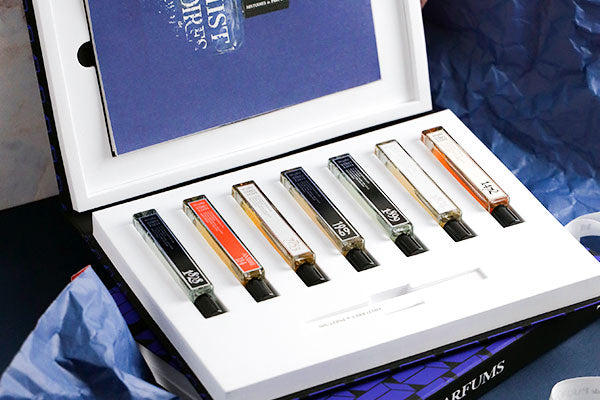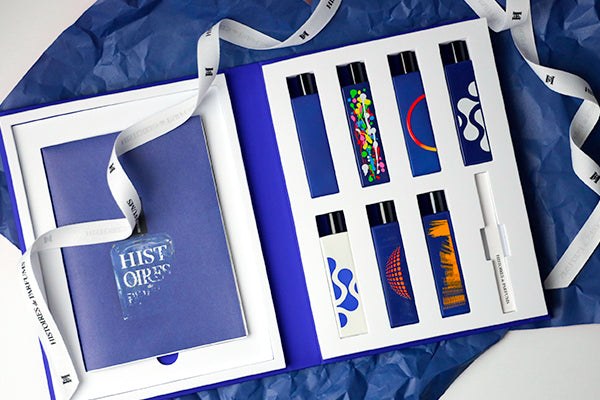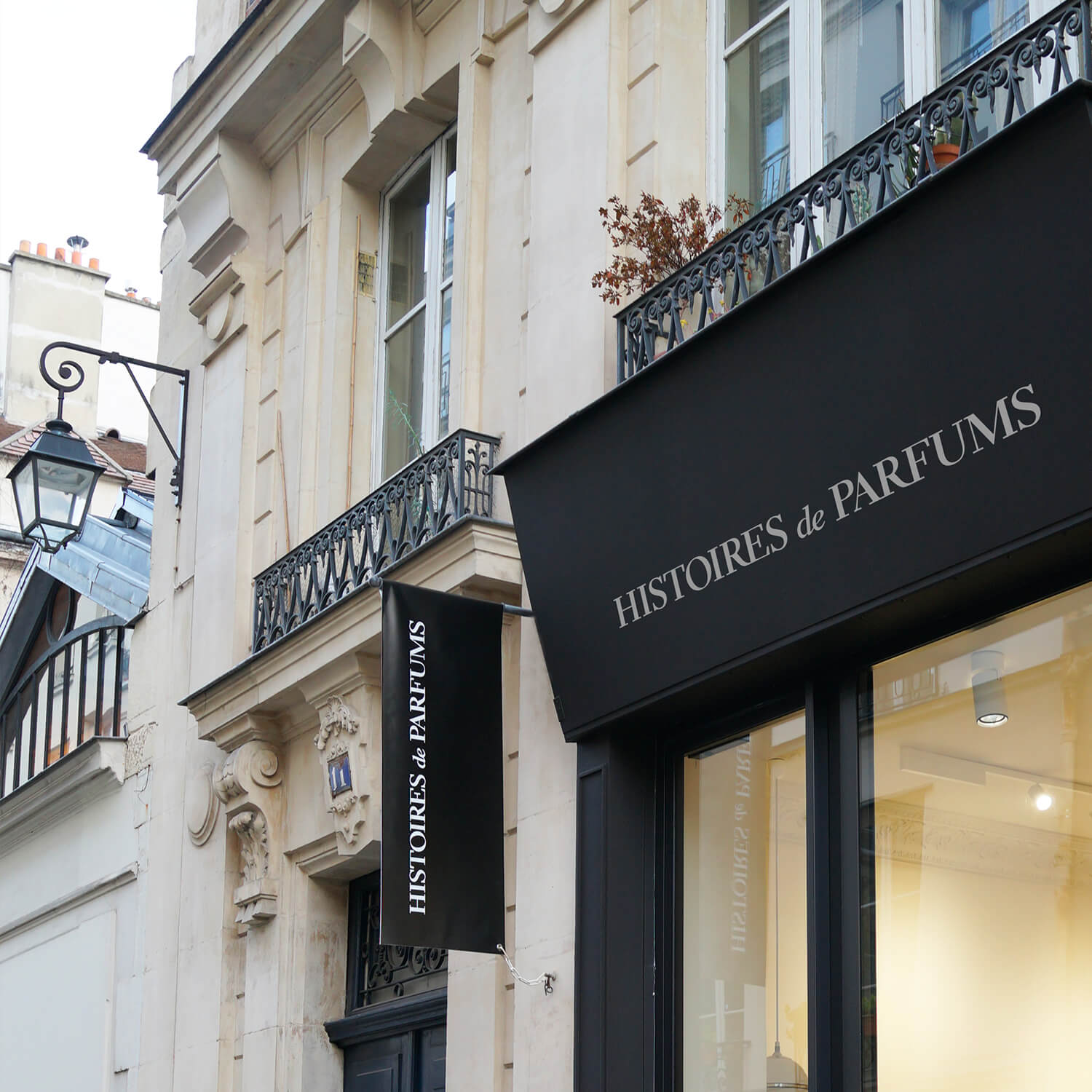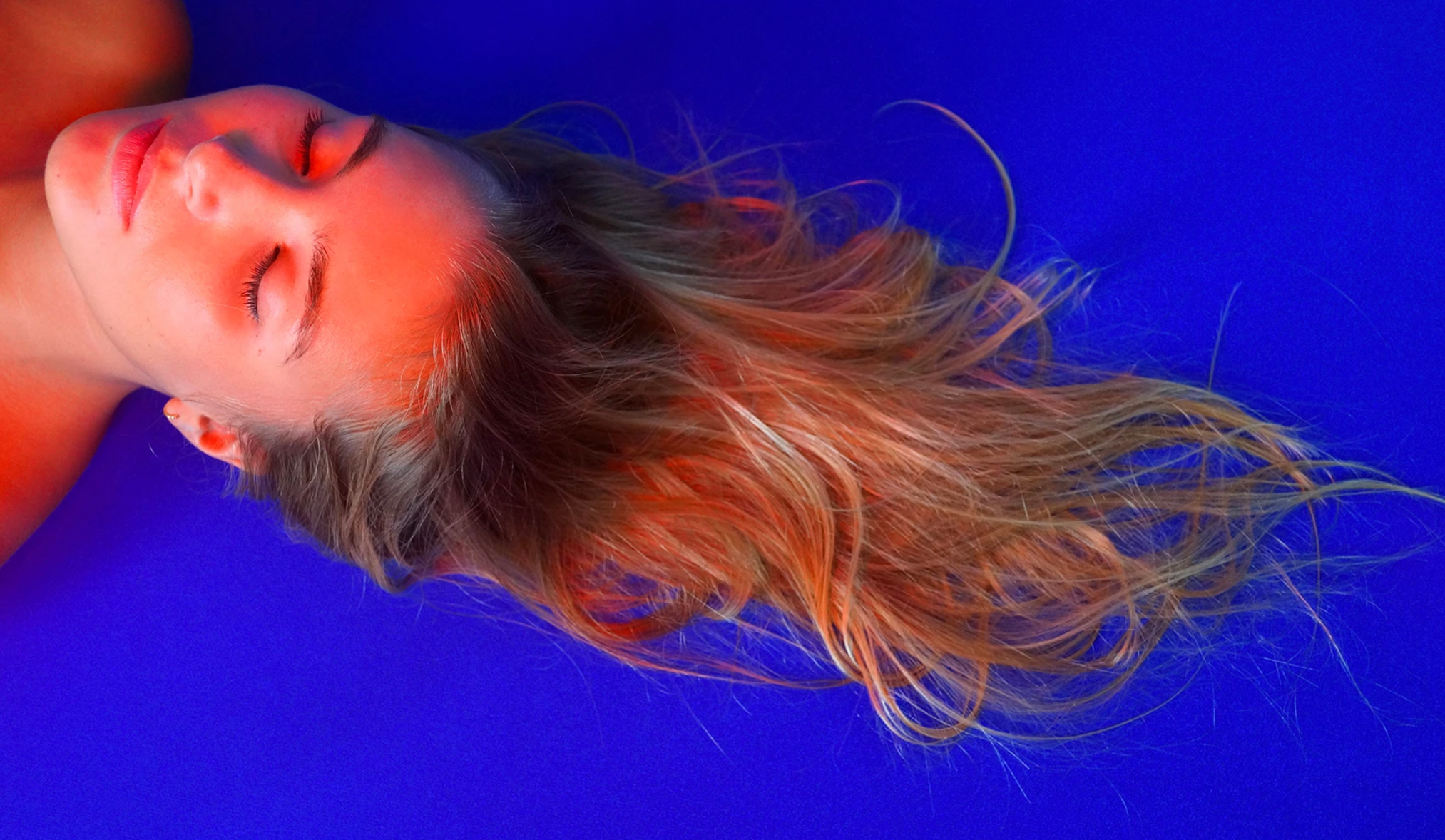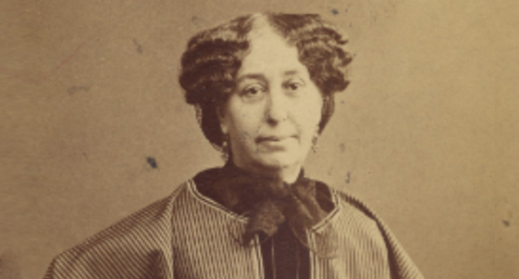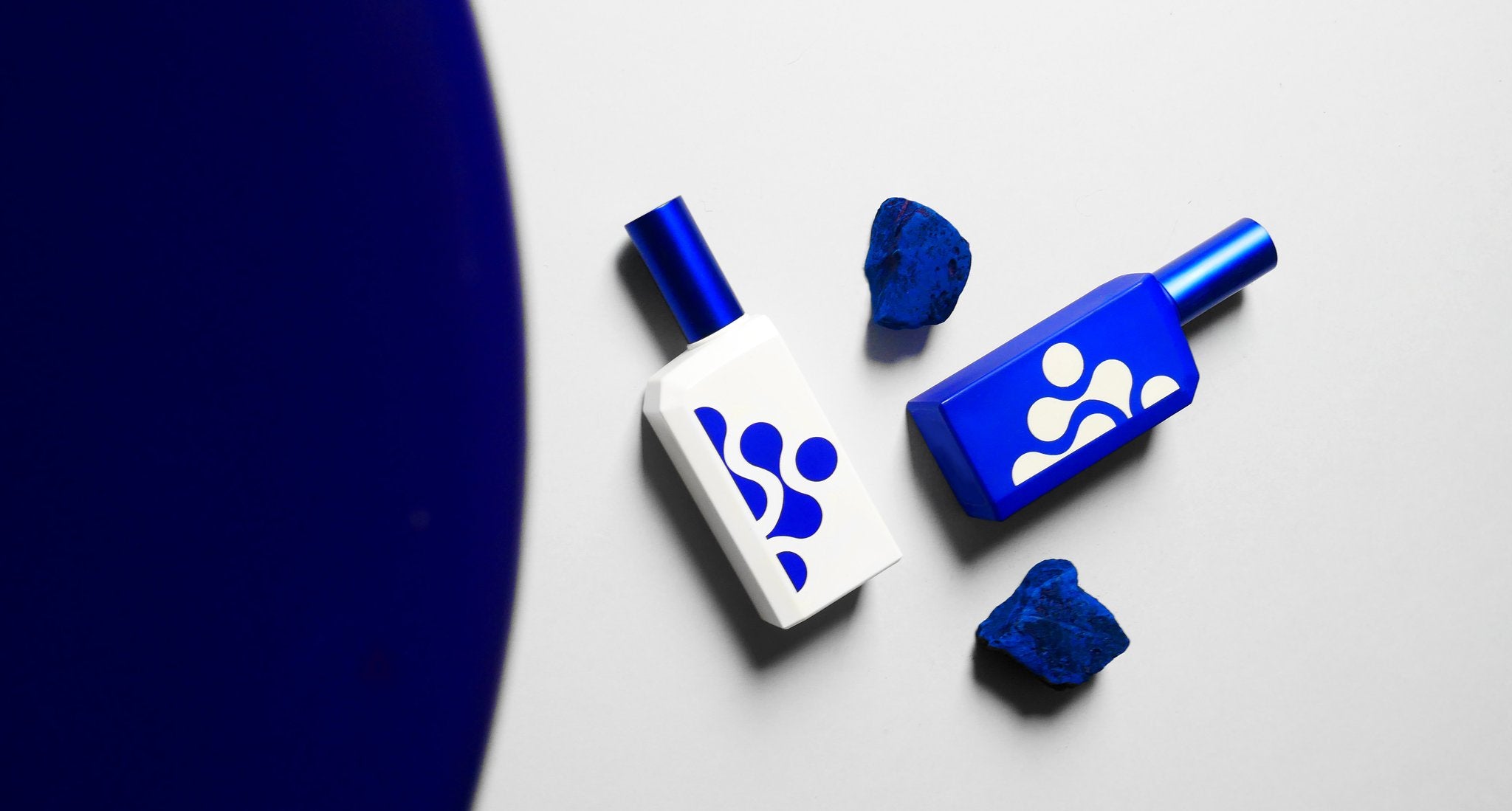
Are natural perfumes better than synthetics ones?
Nature & Perfumes
As soon as humankind learnt to kindle a flame, they tried to extract the odoriferous substance of plants surrounding them, for a perfume recipient was found in Cyprus and dated back to 4000 years ago... to the beginnings of the Bronze Age. Whether Egyptian, Sumerian or Harrapan, these civilisations have in common that they tried and succeeded in extracting the essence of the flowers and resins of their environment, for various usages.
It would be pointless to try and oppose the different roles of perfume in those cultures where mind, body and soul formed an indivisible unity. Perfume meant all that exists “through smoke”, all that is made visible “through smoke”, all that lives “through smoke”. Perfume dulled the senses and healed the bodies. At the time, they were mostly mixtures of aromatics and resins, thyme, sage, marjoram; myrrh, benzoin, labdanum; henna, calamus, papyrus and other substances were cooked for hours in wine and oil and worn such whereas incense was burnt to fragrance, sanctify and cleanse the air. Perfume was thus both cause and consequence: it heals because it smells good and it smells good because it heals.
To the Egyptians, incense is the sweat of gods then, under the influence of the neo-Pythagoreans, it becomes a way to experience divinity. Through observing, reproducing and subliming natural operations, humankind can have a taste of celestial realities. This active correspondence between the microcosm and the macrocosm will give birth to alchemy which ultimate goal -to transmute one into the other- will incite its most prominent savants to extract the essence of all living things. Alchemy, thanks to Zozimos of Panopolis’ teachings, will perfect distillation methods all through the first millennium until Villeneuve’s discovery of eau-de-vie, allowing for alcohol-based perfumes to be created.
For until then, perfume was only worn as an unguent or a balm. The recrudescence of plague episodes, the consequent fear of water and the improvement of distillation techniques established perfume as a preventive medicine. The essence of aromatics, once extracted, becomes easier to administer to the sickly. This relation between nature and healing, passed down from the Grecians, echoes the ayurvedic and traditional Chinese medicines. This relation also explains why perfumers did not exist per se before the end of the 17th century, when they were separated from grocers, apothecarists and pharmacists.

The rising of scientific medicine will enable perfume to abandon its therapeutic role and become an artistic discipline of its own. Its naturalistic approach however will soon face one major obstacle: the impossibility to faithfully transcribe the scent of flowers.
An obstacle overcome thanks to chemistry.
Perfume & Synthesis
We place the emergence of organic chemistry in 1828 when Wöhler first synthesised urea, proving that it was possible to create in a laboratory a substance that only existed in nature. This discovery came after a century of research and experiments and reflecting upon the role of apothecaries, pharmacists and chemists. It culminated in the condemnation of vitalism -the belief that any living thing comes from and thus carries a vital force- which paved way for a new form of perfumery.
During the following decades, chemists will succeed in recreating some of the most important molecules of perfumery.
In 1855, Benzyl Acetate, the main aromatic compound of Jasmine, Tiaré and Ylang-Ylang is discovered.
In 1868, Coumarin is synthetized. Its smell, reminiscent of almonds and tonka bean, will inspire Fougère Royale d’Houbigant by Houbigant and the eponym olfactive family.
In 1874 comes Vanillin, which will be crucial in the making of Jicky.
In 1888, Bauer creates a synthetic “white” musk, the first of an entire olfactive genre.
In 1893, ionones, responsible for the smell of Violets, are synthetized.

Perfumers will thus try to use these molecules to create more naturalistic and figurative perfumes, transcribing through scents the experiences one only lives in secret, gradually liberating their creations from the olfactive restraints posed by certain natural materials. These collaborations between perfumers and chemists will be useful to art as much as to science. In 1939, Lavoslav Ružička wins a Nobel Prize for his discovery of muscone and civetone, responsible for the smell of musk and Civet. As well as deepening the study and synthesis of musks, this discovery will allow perfumers to continue using musk notes after the ban on deer musk hunting in the 1970’s.
In 1950, the synthesis of Ambroxide, followed by that of Hedione in 1956 will provoke somewhat of a revolution in the world of perfumery. By extending the power of Citruses, the latter will give birth to more transparent and abstract creations. Eau Sauvage will make it famous. The way was now open for a more conceptual perfumery, much less figurative than at its beginnings.
In 1966, Calone and its sea spray profile appears. In 1973, Cashmeran is created. Three years later, Iso E Super appears. Three molecules that will become the pillars of the contemporary perfumery we know, which you can smell masterfully balanced by Luca Maffei in our This is not a Blue Bottle 1/.5.
Suffice to say that the perfumery we know and love wouldn’t have seen the light of day if not for synthetic molecules. From the days of Guerlain to the minimalistic creations of Jean-Claude Ellena, perfumers have always used synthetics to help them shape their vision, without ever opposing naturals and synthetics, the latter often helping the former.
Alas, the ignorance of perfume’s history coupled with a sudden change of paradigm fueled the recent critics aimed at synthetics in perfumery, yet we must ask ourselves whether these are truly justified...
Synthesis & Health
In midst of the « clean beauty » era, it sounds unwise to boast synthetic molecules. More and more fragrance house speak about the natural materials they use, more and more companies invest on green technologies and upcycling processes, more and more critics and collectors lament on the loss of vintage perfumes and how better they were, leading to a somewhat ironic contradiction: some plea for more naturals because they think it safer, others plea against regulations because they are too safe.
This assumption points to a rather common belief, that natural materials are more respectful towards nature and thus humans, taking us back to the origins of perfumery. Although some synthetic materials have proven not to be environmentally friendly and have since been banned or restricted, we mustn’t forget that natural molecules are just as dangerous, sometimes deadly.

Cyanide, curare, arsenic are just a few of nature’s very own poisons. Likewise, some oils or absolutes used in perfumery proved to be allergenic or sensitizing, like the Oakmoss or most Citruses and that is why regulations were put in place, to limit the use of certain molecules in a perfume composition. Chemistry came to help perfumers by taking out the problematic molecules out of an oil. Citruses lost their furocoumarins, Oakmoss lost its atranol thus creating safe materials.
Nowadays, it is absolutely possible to create natural perfumes that also comply with the safest IFRA regulations, such as our very own This is not a Blue Bottle 1/.4.
We see that this controversy is more complicated than it seems for, more often than not, synthetics support naturals. It is important to remember that perfumes and chemistry have constantly been evolving ever since the first civilization and, if we can only rejoice at the newfound enthusiasm for harvesting methods more respectful of the environment, we must also question the pressure this new demand puts on already fragile ecosystem and endangered species.
As for knowing if naturals are better than synthetics, one can only trust one’s nose.

